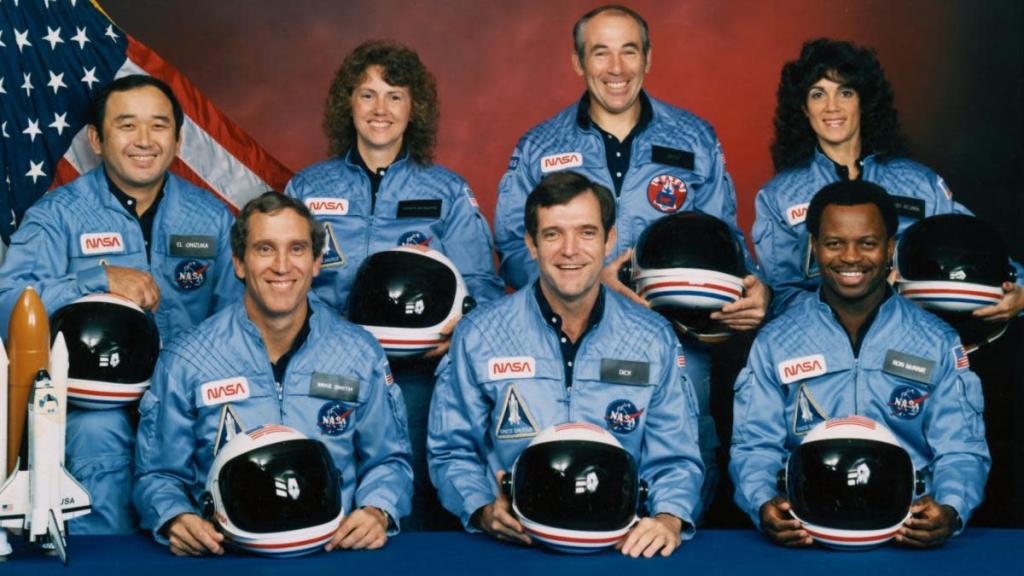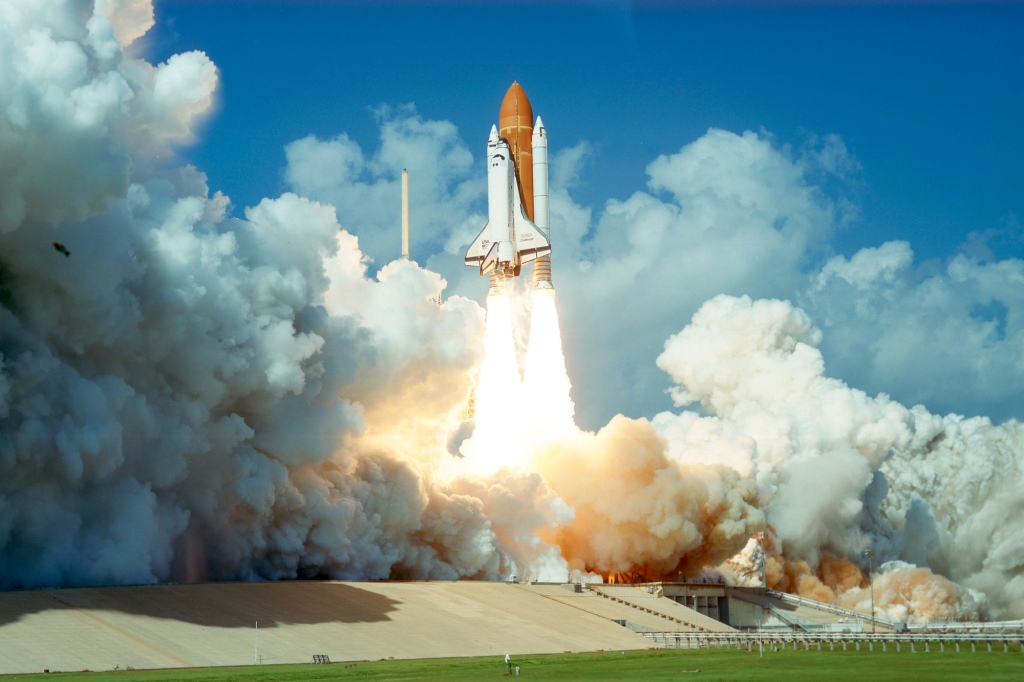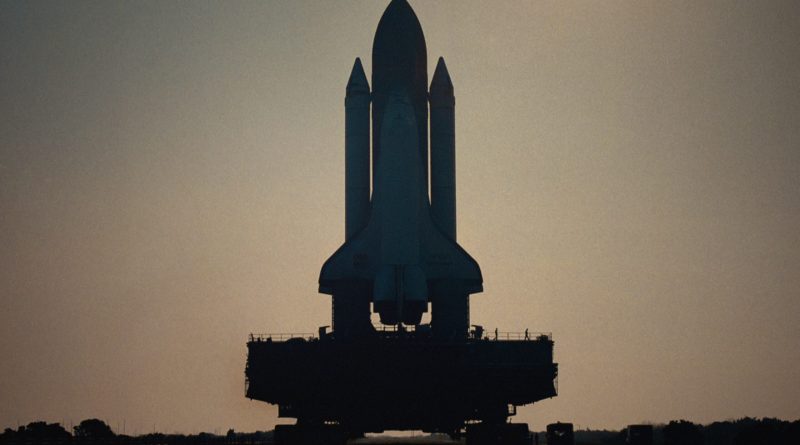Of the series that was launched on Netflix last year, few possessed the potency of Challenger: The Final Flight. For those who grew up after the Challenger tragedy, it might be easy to not understand just what this ill-fated flight meant to the United States and the world. What Challenger does superbly well is it places the viewer back in the 1980s and takes them on the journey through the months of media hype surrounding the mission and the hope it inspired. The effect is an utterly enthralling and devastating experience that manages to recapture some of the shock and disbelief when the mission went wrong.
Space is for Everybody

One of the things the series stresses is the importance of the Challenger mission, which may have been one of the most important of the entire space program. The historic shuttle flight was meant to herald in a new era of private citizens entering space. This was achieved by selecting one of the nation’s teachers to join six experienced astronauts in one of the shuttles, during which live lessons were going to be broadcast from orbit. After an extensive search for a candidate, New Hampshire teacher Christa McAuliffe was selected.
Challenger was a media phenomenon, capturing the imaginations of a generation of children, many of whom watched the launch live in school. They believed wholeheartedly in Christa McAuliffe’s famous statement about her mission, that “space is for everybody”. Millions who watched it live believed in it. They believed right up until they witnessed one of the vehicle’s boosters fail, resulting in an explosion that disintegrated the Challenger and killed all seven of its crew.
In an era following 9/11 and countless school shootings, it can be easy to not understand why the deaths of these seven people had such an impact. That’s in part because past documentaries focused merely on the technical aspects of the accident, causing an emotional disconnect from the disaster itself. While the technical aspects of the disaster are explored in detail, the heart of the series is how closely it looks at those who were lost, and the aftermath of the tragedy on their families.
‘Seven Really Brilliant and Beautiful People‘
The crew of the Challenger consisted of a wide range of talent. They were Commander Francis Scobee, pilot Michael J. Smith, mission specialists Ronald McNair, Judith Resnik and Ellison Onizuka, payload specialist Gregory Jarvis and civilian teacher Christa McAuliffe. The series spends well over half of its running time focused not on the disaster itself, but on who these seven were as people, the time they spent with their families, and the training they had to go through leading up to the mission.
Inviting the viewer into the homes and lives of these seven is what gives the series its power. Following them through most of the series, one can’t help but also get swept up in the excitement and anticipation of what this mission was supposed to represent for the future of spaceflight. It’s not until the end of episode three and the bulk of the fourth episode that the actual disaster is dealt with directly, because the disaster itself won’t matter until the audience understands what was lost. We meet them all. We learn about McNair’s experiences with prejudice in his youth, and Onizuka’s passion for cooking. We hear about Resnik’s frustration with some of the sexist attitudes at Nasa, and see her uncomfortable reaction with a reporter’s flirtatious remarks after she passed her class.
By far the crewmembers given the most attention are Commander Scobee and teacher Christa McAuliffe. Commander Scobee’s widow, June Scobee Rodgers, gives the most extensive and heartbreaking testimony perhaps of anyone in the show. Christa McAuliffe, who was meant to be the first civilian in space, was interviewed and trained extensively prior to the launch. The show follows her on that journey.
The Media Blitz
Taking focus away from the actual disaster allows the show to focus on an oft-forgotten aspect of the Challenger tragedy, and that was the media frenzy it unleashed. The idea of a private citizen without military or flight training entering space was a major cultural milestone. It was also a life-changing event for McAuliffe herself, who was not only interviewed extensively prior to the tragedy but was also required to undergo months of training to prepare her for the flight. McAuliffe was a national hero, and meant so much to the country, in particular young people, in the days leading up to the launch. The show makes sure that she, and the others mean a lot to the audience as well.
A lot is captured in these segments, such as McAuliffe having to uproot her quiet New Hampshire life and take her family to Houston. Not only are her interviews shown, but also behind the scenes footage of her military and flight training, much of which hadn’t been made available to the public until now. The excitement and enthusiasm captured in these segments is contagious and really transports the viewer back in time to the months leading to the launch. It’s almost enough to make you forget where the journey ends, but the show casts a dark cloud over these segments.
Throughout these episodes, the show repeatedly cuts away to what was going on behind the scenes, where many engineers were expressing concerns about the safety of the solid rocket boosters, and how they were constantly overruled by their superiors. These segments fill the series with a sense of dread and inevitability. Just when the viewer starts to feel that same hope and excitement that so swept the nation, we are taken behind the scenes to watch how the dream unravelled.
Shock and Aftermath
The launch finally occurs towards the end of the third episode. It is not accompanied by any narration or technical aspects of the accident. We the viewer experience it as the country and the world did, unedited and in stunned silence. The most powerful portions of this segment are the testimony of the family members, who speak of the disbelief and feelings of denial following the explosion. It is a gut-wrenching experience that comes perhaps the closest any documentary has to capture that feeling of soaring hope suddenly changed into shocked, grief-stricken silence.

It is here that the viewer finally gets a glimpse into how this impacted the loved ones of those who died. Scobee’s widow speaks the most to the viewer, recounting an especially heartbreaking story of returning to her husband’s room in Huston after the disaster, and finding a Valentine’s card in his suitcase he’d intended to give her upon his return. Just as powerful are the testimonies of eyewitnesses, many of whom were children at the time. Peter Billingsley, star of A Christmas Story and the spokesperson for the Young Astronauts Program gives an especially gut-wrenching testimony of watching the launch live.
It is only after all of this, in the latter half of the final episode that we the viewer are finally let in on the technical details of the accident, given a front-row seat to the committees organized to find out what went wrong. If there are any villains in the show, they would be Lawrence Mulloy and William Lucas, who headed the program and were largely responsible for orchestrating the launch in spite of safety concerns. The two are interviewed and try to make their case, but after three episodes detailing safety concerns, and meeting the crew of the shuttle, the feeling of outrage at their irresponsible behavior is perhaps the most potent it has been since the immediate aftermath of the disaster.
Don’t Forget

Seven people may not seem like much, but one must understand that it wasn’t just seven brilliant people who died, but a dream they represented. The Challenger mission was meant to say, as McAuliffe herself said, that space is for everybody. Challenger: The Final Flight is less a documentary and more of a time machine, taking the viewer back to when that doorway to the future was opened, and allowing them to experience the devastation of it being slammed shut. But it also ends on an important note that in spite of the tragedy, that dream still matters. The Challenger mission was meant to say that space is for everybody. By the end of this series, in spite of all the heartbreak and the tears, you’ll believe it still is.
Like this article? Check out these other similar pieces on the Netflix Nightstalker series and Soul from some of our top writers.
